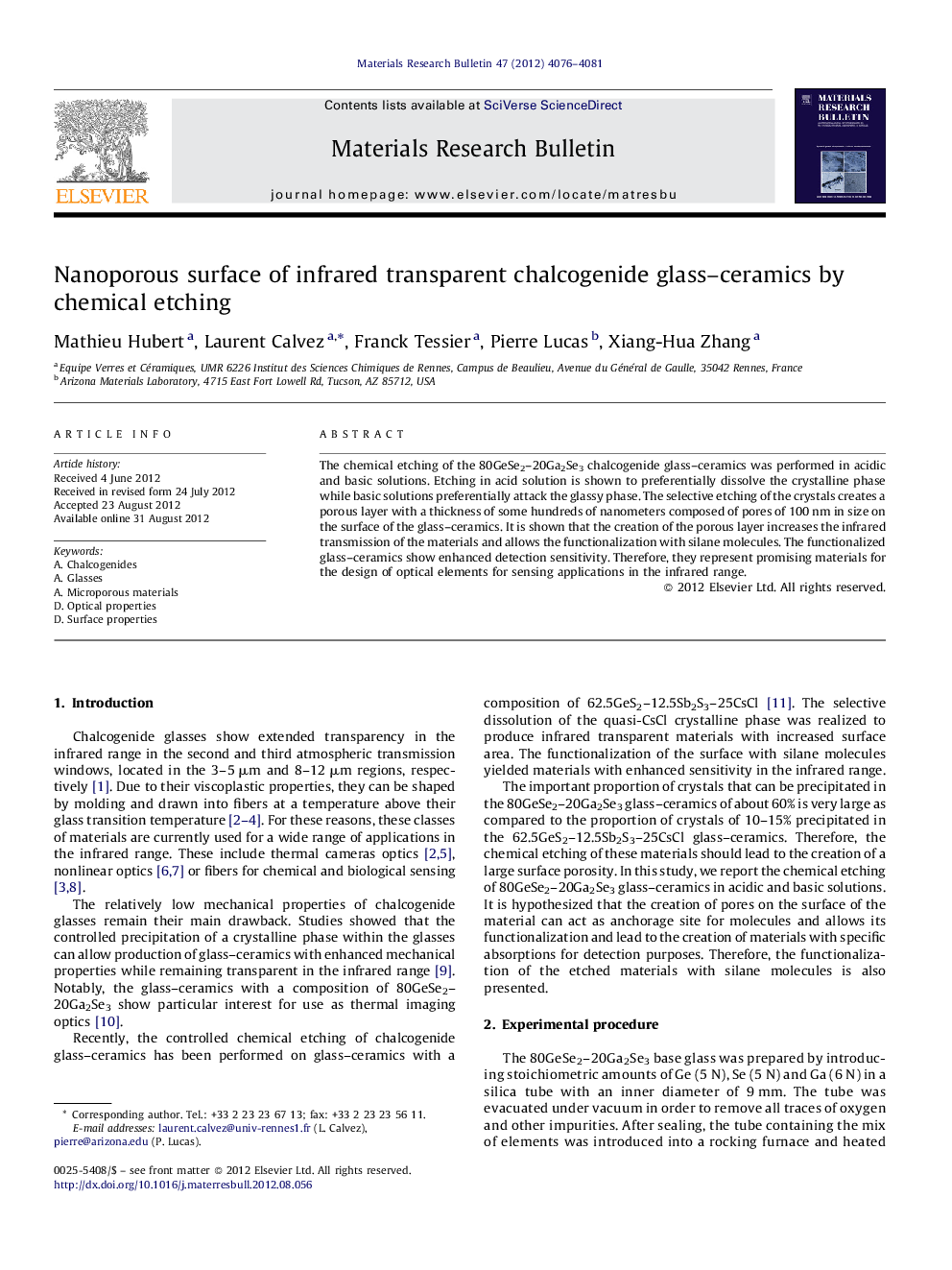| Article ID | Journal | Published Year | Pages | File Type |
|---|---|---|---|---|
| 1489356 | Materials Research Bulletin | 2012 | 6 Pages |
The chemical etching of the 80GeSe2–20Ga2Se3 chalcogenide glass–ceramics was performed in acidic and basic solutions. Etching in acid solution is shown to preferentially dissolve the crystalline phase while basic solutions preferentially attack the glassy phase. The selective etching of the crystals creates a porous layer with a thickness of some hundreds of nanometers composed of pores of 100 nm in size on the surface of the glass–ceramics. It is shown that the creation of the porous layer increases the infrared transmission of the materials and allows the functionalization with silane molecules. The functionalized glass–ceramics show enhanced detection sensitivity. Therefore, they represent promising materials for the design of optical elements for sensing applications in the infrared range.
Graphical abstractFigure optionsDownload full-size imageDownload as PowerPoint slideHighlights► Glass–ceramics were prepared and chemically etched in acidic and basic solutions. ► Acid solutions preferentially dissolve the crystalline phase. ► A nanoporous layer has been obtained on the surface of the materials. ► The porous layer acts as antireflective coating and enhances the optical transmission. ► Functionalized glass–ceramics with enhanced detection sensitivity have been prepared.
